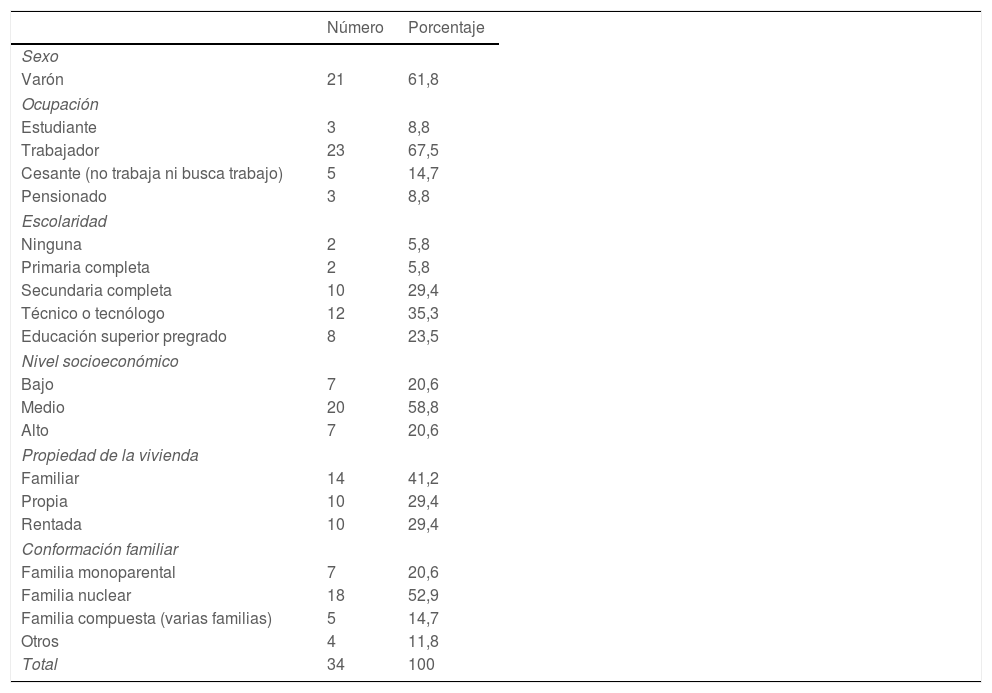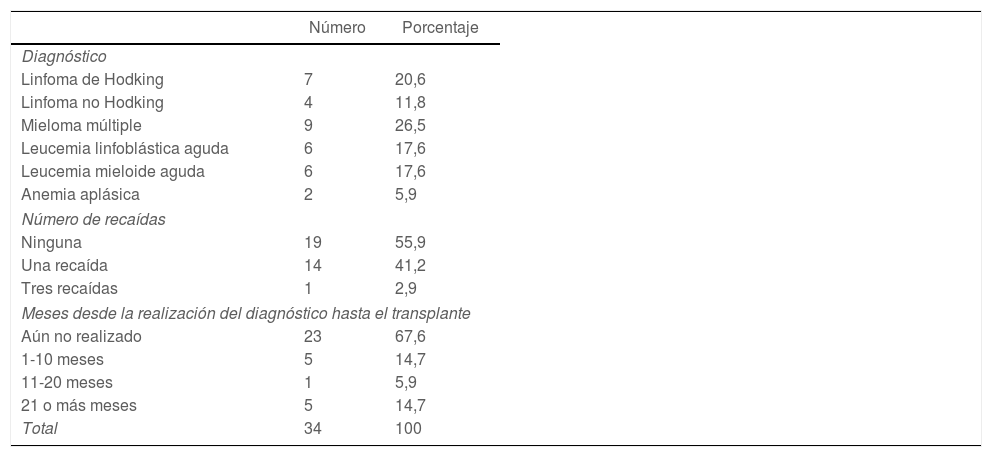Existe información limitada sobre los mecanismos de afrontamiento en pacientes que serán sometidos a trasplante de médula ósea (TMO), adicionalmente las condiciones de una hospitalización prolongada implican una alta exigencia emocional. Se realizó la caracterización de los mecanismos de afrontamiento, y se evaluaron síntomas de ansiedad y depresión en pacientes llevados a TMO en una institución de salud de alta complejidad entre el 1 de febrero y el 30 de junio de 2022.
MétodosDiseño descriptivo transversal, muestreo por conveniencia de pacientes mayores de 18 años que ingresaron para realización de TMO. Se aplicaron 5 cuestionarios (datos sociodemográficos, Patient Health Questionnaire 9 (PHQ-9), Generalized Anxiety Disorder (GAD-7), la escala de desesperanza de Beck y Mental adjustment to cancer scale (MAC-s). Las variables cualitativas se resumieron con frecuencias absolutas y porcentajes, las variables cuantitativas se resumieron en medianas y rangos intercuartílicos. Para la correlación se utilizaron coeficientes de correlación de Spearman.
ResultadosDe los 34 participantes, el 61,5% fueron varones. La escala MAC encontró como principal estilo de afrontamiento el espíritu de lucha, no se encontró correlación entre la escala MAC y las variables clínicas evaluadas. La escala PHQ-9 y GAD-7 mostraron síntomas depresivos y de ansiedad en el 20,6% de los participantes, respectivamente. La correlación fue positiva entre aquellos que presentaban síntomas de depresión (PHQ-9) y ansiedad (GAD-7) (coeficiente de Spearman 0,8).
ConclusionesEste estudio encontró como principal estilo de afrontamiento el espíritu de lucha. La alta frecuencia de ansiedad y depresión plantea la necesidad de tamizaje y estrategias preventivas.
Information about coping mechanisms of patients who are taken to bone marrow transplant (BMT) are limited. Besides, the long hospitalization has a high emotional impact. We characterize coping mechanisms and evaluate hopelessness, anxiety and depression of patients who were taken to bone marrow transplant (BMT) in a high complexity health institution in the department of Valle del Cauca between February 1 and June 30, 2022
MethodsDescriptive cross-sectional design, with convenience sampling of patients over 18 years of age who were admitted for BMT. Participants filled out five questionnaires (sociodemographic data, Patient Health Questionnaire 9 (PHQ-9), Generalized Anxiety Disorder (GAD-7), the Beck hopelessness scale and The mental adjustment to cancer scale (MAC-s). The qualitative variables were summarized with absolute frequencies and percentages, the quantitative variables were summarized in medians and interquartile ranges. For the correlation of variables, Spearman's correlation coefficients were used.
OutcomesFrom 34 participants, 61.5% were men. The MAC-s scale found fighting spirit as the main coping style, no correlation was found between the scale MAC-s and the clinical variables evaluated. The PHQ-9 and GAD-7 scale showed depressive and anxiety symptoms in 20.8% of the participants. The correlation was positive between those with symptoms of depression (PHQ-9 scale) and those with anxiety (GAD-7 scale) (Spearman's coefficient 0.8).
ConclusionThis study found fighting spirit as the main coping style. High frequency of anxiety and depression. The high frequency of anxiety and depression raises the need for screening and preventive strategies.
Artículo
Comprando el artículo el PDF del mismo podrá ser descargado
Precio 19,34 €
Comprar ahora









